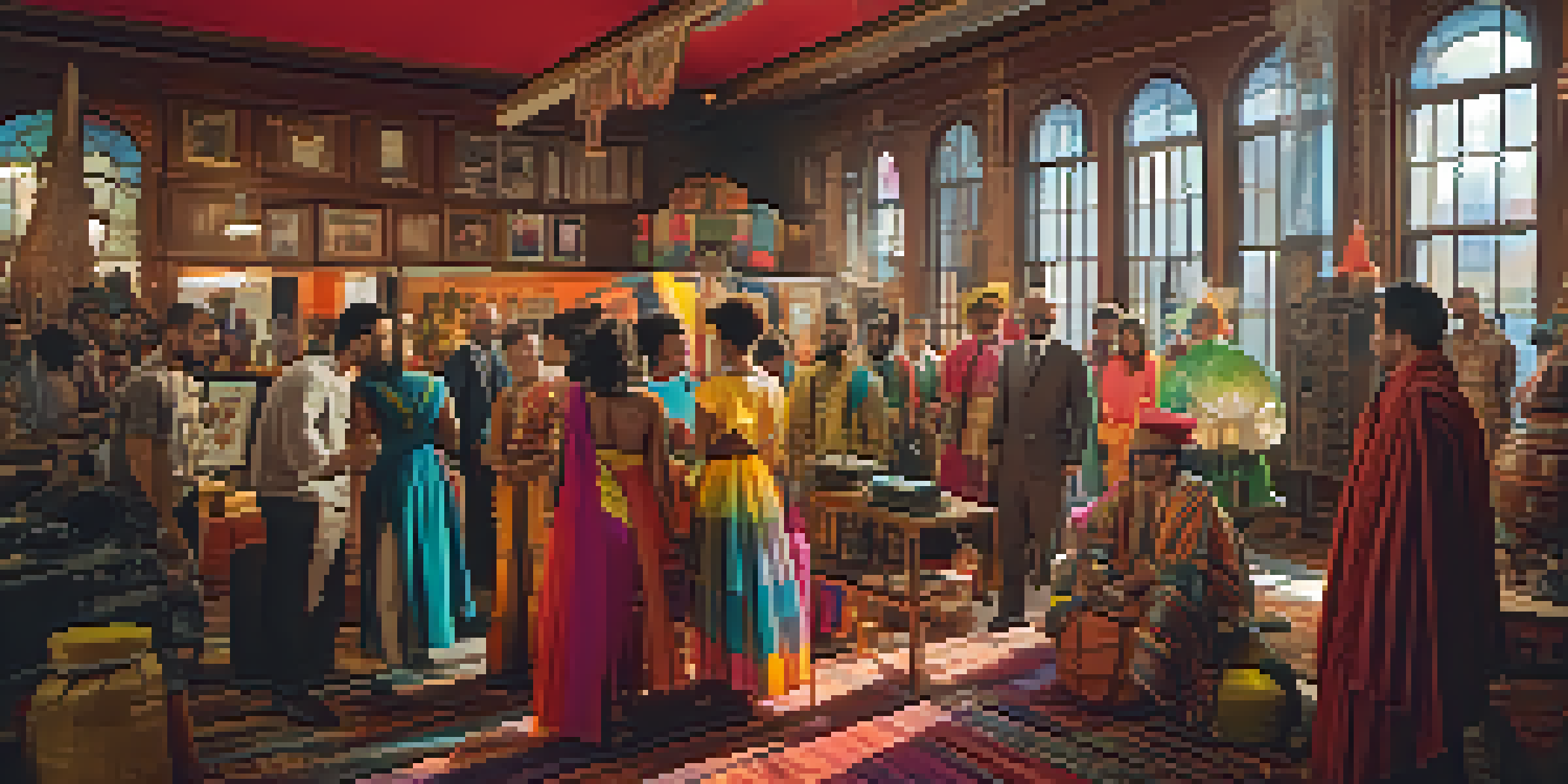The Influence of Globalization on Hollywood's Cultural Narratives

Defining Globalization and Its Reach in Film
Globalization is the process where businesses and cultures develop international influence. In the realm of film, this means that movies are no longer confined to just one country's stories or perspectives. Instead, Hollywood films now reflect a blend of various cultures, making them more relatable to a global audience.
Globalization is a double-edged sword that can lead to both a richer storytelling landscape and the dilution of original cultural narratives.
For instance, the incorporation of diverse characters and storylines helps in resonating with viewers from different backgrounds. This not only broadens the appeal of films but also creates a more rich and varied narrative landscape. By reflecting global cultures, filmmakers can attract larger audiences and boost box office revenues.
However, this blending can sometimes dilute original cultural narratives, leading to concerns about authenticity. It's essential that while filmmakers embrace global influences, they also remain true to the stories and cultures they represent.
Hollywood's Global Audience: A Double-Edged Sword
The expansion of Hollywood into international markets has transformed the way films are made. Filmmakers now consider global audiences right from the scriptwriting phase, aiming for themes and styles that resonate worldwide. This shift can lead to more inclusive narratives that reflect a variety of experiences.

Yet, this global focus can also pressure creators to conform to certain stereotypes or trends that appeal broadly, potentially overshadowing unique local stories. For example, while blockbuster films often feature universal themes of love or adventure, they may overlook the nuances of specific cultures unless done carefully.
Globalization Enriches Film Narratives
The blending of cultures in film creates more relatable stories for diverse audiences while also raising concerns about authenticity.
As a result, filmmakers must strike a balance between appealing to a global audience and honoring the authenticity of local narratives. This challenge highlights the complexity of storytelling in an increasingly interconnected world.
Cultural Exchange: Collaborations and Co-Productions
Globalization has led to a rise in international collaborations and co-productions, enriching Hollywood's storytelling. By partnering with foreign filmmakers, Hollywood can infuse its films with authentic cultural elements that resonate with diverse audiences. This collaboration often results in films that feel both global and local.
The beauty of cinema lies in its ability to transcend borders and connect us through shared stories and experiences.
Take the example of films like 'Crouching Tiger, Hidden Dragon,' which blends Hollywood production values with Chinese storytelling techniques. Such collaborations not only enhance the quality of the film but also broaden its appeal, showcasing the beauty of cultural fusion.
However, it’s crucial for these partnerships to approach cultural elements with respect and understanding. When done correctly, this cross-pollination can lead to innovative storytelling that honors the source material while engaging a wider audience.
The Rise of Global Streaming Platforms
With the advent of global streaming platforms like Netflix and Amazon Prime, the way audiences consume films has drastically shifted. These platforms have made it easier for international films to reach American audiences, allowing for a wider variety of cultural narratives. This democratization of film access has changed the game for traditional Hollywood models.
Now, audiences can discover films from different cultures without the barriers that once existed in theatres. This exposure fosters a greater appreciation for diverse storytelling, encouraging filmmakers to explore and incorporate global narratives in their work.
Challenges of Cultural Representation
Filmmakers must navigate the fine line between cultural appropriation and appreciation to authentically represent the cultures they depict.
However, the dominance of these platforms also raises questions about the future of local cinema in various countries. As international films gain traction, smaller local films may struggle to find their audience, highlighting the need for a balance between global content and local storytelling.
Cultural Appropriation vs. Cultural Appreciation
In the globalized film industry, the line between cultural appropriation and cultural appreciation can blur. While filmmakers aim to tell diverse stories, they must navigate the fine balance of borrowing from other cultures without misrepresenting or exploiting them. This has led to significant discussions around the responsibilities of filmmakers in portraying cultures accurately.
Take, for instance, the backlash films have faced when they fail to authentically represent the cultures they depict. Audiences are increasingly calling for diversity both in front of and behind the camera, emphasizing the need for storytellers to engage authentically with the cultures they portray.
This conversation is essential in fostering a respectful representation of cultures. By prioritizing genuine engagement and collaboration with cultural communities, filmmakers can create narratives that celebrate diversity rather than appropriate it.
Impact of Globalization on Genre Evolution
Globalization has also influenced the evolution of film genres, leading to hybrid genres that blend elements from various cultures. For example, the fusion of action and martial arts in films like 'The Matrix' showcases how different genres can come together to create something fresh and exciting. This blending not only attracts diverse audiences but also enriches the storytelling landscape.
Moreover, the incorporation of global themes allows filmmakers to explore more complex narratives that reflect the interconnectedness of today's world. This evolution can lead to innovative storytelling that resonates with viewers on multiple levels.
Streaming Platforms Change Access
Global streaming services have democratized film access, allowing international narratives to reach wider audiences while challenging local cinema.
However, filmmakers must remain mindful of the roots of the genres they are blending. Respecting and acknowledging the origins of different cultural elements is key to creating authentic and meaningful narratives.
The Future of Hollywood's Cultural Narratives
As globalization continues to shape Hollywood, the future of cultural narratives looks promising yet complex. With the rise of diverse voices and stories, there is an opportunity for richer, more inclusive storytelling that reflects our global community. Filmmakers are increasingly recognizing the value of representing various cultures authentically.
However, this shift also comes with challenges, such as navigating the expectations of a global audience while remaining true to local narratives. The success of future films will depend on the ability of filmmakers to balance these competing interests while fostering genuine cultural representation.

Ultimately, the influence of globalization on Hollywood's cultural narratives points to a future where stories are not just told, but shared and celebrated across borders, creating a more connected and understanding world through the art of film.